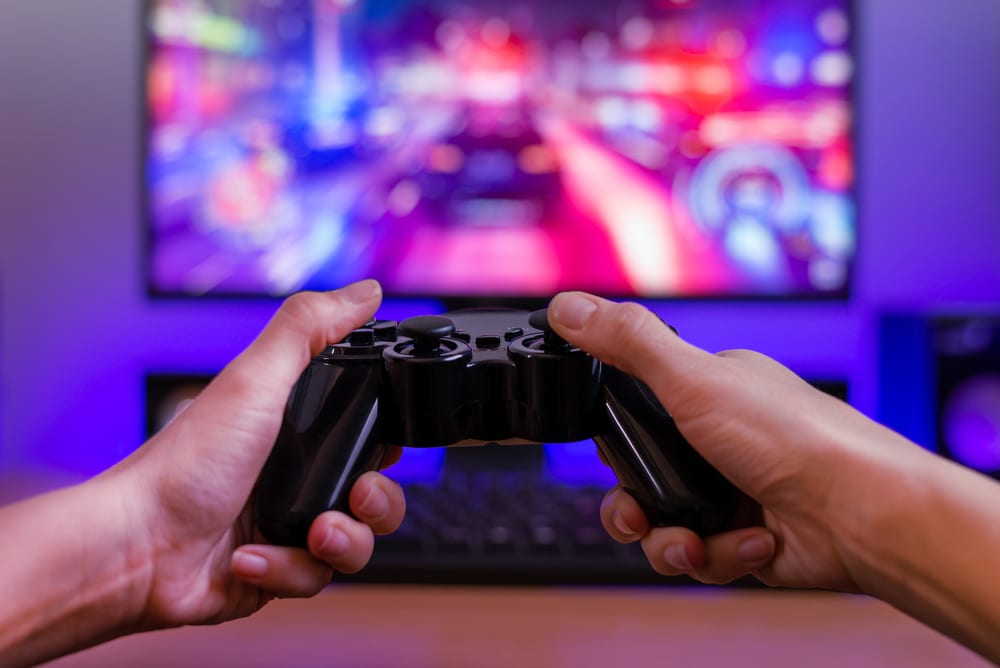Level up your game development with AI storyboard generators! These tools automatically create storyboards and scenarios, gaining popularity among developers for streamlining the game creation process and delivering innovative and dynamic storytelling.
What Is an AI Storyboard Generator?
An AI storyboard generator is a software tool used in game development to automatically create visual representations of the game’s narrative flow and scenes. It utilizes artificial intelligence algorithms to analyze story inputs and produce corresponding storyboards, allowing game developers to visualize the progression and design of the game’s events and make informed decisions.
Why Use an AI Storyboard Generator for Game Development?
In the fast-paced world of game development, time and efficiency are crucial factors. This is where AI storyboard generators come in, providing a streamlined and efficient way to create storyboards for games. In this section, we will discuss the benefits of using an AI storyboard generator for game development. From saving time and effort to improving efficiency and accuracy, these tools offer a structured framework for game developers to easily create compelling and visually appealing storyboards.
1. Saves Time and Effort
- You can utilize pre-designed templates or frameworks to quickly lay out the initial structure of the game scenarios.
- You can automate the process of creating diverse and dynamic storyboard sequences, reducing manual labor.
- You and your team can eliminate the need for extensive brainstorming and planning, thereby expediting the game development process.
Fact: Integrating an AI storyboard generator into the game development workflow can save up to 40% of time and effort in scenario creation.
2. Improves Efficiency and Accuracy
- Utilizes Advanced Algorithms: AI storyboard generators employ sophisticated algorithms to streamline the process, improving efficiency and accuracy.
- Enhances Workflow: Automating the storyboard creation accelerates the overall development cycle and ensures precision.
- Ensures Accuracy: With minimized human error, the generated storyboards maintain a high level of precision.
3. Provides a Structured Framework
- Gathering Data and Input: The AI storyboard generator collects relevant data and input, including game parameters, player interactions, and narrative elements.
- Analyzing and Processing Information: It then processes this information to identify patterns, plot points, and potential story developments.
- Generating Storyboards and Scenarios: Based on the analyzed data, the AI provides a structured framework for game development by generating detailed storyboards and dynamic game scenarios.
What Are the Benefits of Using an AI Storyboard Generator for Game Development?
As the gaming industry continues to evolve, so do the tools and techniques used in game development. One such tool that has gained popularity in recent years is the AI storyboard generator. This innovative technology offers numerous benefits for game developers, including the ability to create unique and dynamic scenarios, reduce development costs, and enhance the overall player experience. Let’s delve into each of these benefits and see how an AI storyboard generator can elevate the game development process.
1. Creates Unique and Dynamic Scenarios
- Identify Game Elements: Determine the key elements in your game, such as characters, settings, and plot twists.
- Utilize AI Algorithms: Implement AI algorithms to analyze these elements and generate unique and dynamic scenarios.
- Customize Scenarios: Tailor the generated scenarios to fit your game’s narrative, ensuring coherence and engagement.
- Test and Refine: Evaluate the scenarios in the game environment, refining them to enhance gameplay dynamics.
2. Reduces Development Costs
- Optimize Resource Allocation: Utilize AI storyboard generators to streamline development processes, thus reducing labor costs and minimizing development expenses.
- Minimize Iterations and Errors: By automating storyboard creation, developers can save time and resources spent on rectifying mistakes and reduce overall development costs.
- Facilitate Agile Development: AI generators enable rapid scenario prototyping, shortening development cycles and, in turn, lowering associated expenses and development costs.
Consider integrating a cost-effective AI storyboard generator to maximize efficiency and minimize game development expenses and costs.
3. Enhances Player Experience
- Engages players with unique and dynamic scenarios tailored to their actions and preferences.
- Enhances player experience and enjoyment by presenting a personalized gaming experience.
- Boosts retention and satisfaction through compelling storylines and interactive elements.
How to Choose the Right AI Storyboard Generator for Your Game?
As game development continues to evolve, more and more developers are turning to AI storyboard generators to streamline the process. However, with a multitude of options available, it can be overwhelming to choose the right one for your game. In this section, we will discuss the key factors to consider when selecting an AI storyboard generator. From the genre and style of your game to the features and capabilities of the generator, we’ll help you make an informed decision. We’ll also touch on the importance of seeking out user reviews and feedback to ensure the best fit for your project.
1. Consider Your Game Genre and Style

- Understand Game Genre: Analyze if your game falls under action, adventure, role-playing, strategy, simulation, or other genres.
- Define Game Style: Determine if your game style is narrative-driven, open-world, multiplayer, single-player, or a combination of these elements.
- Match with AI Capabilities: Assess if the AI storyboard generator can adapt to your game’s genre and style for optimal scenario generation.
2. Evaluate the Features and Capabilities

- Compatibility: Make sure to check if the generator is compatible with your chosen game development platform or workflow.
- Customization: Look for features that allow for easy customization to fit your game’s specific requirements and style.
- Integration: Evaluate the ease of integrating the AI storyboard generator into your current game development pipeline.
3. Look for User Reviews and Feedback

- Check out user reviews on reputable platforms.
- Evaluate feedback on factors such as ease of use, scenario diversity, and customization options.
- Take into account the overall satisfaction of developers who have utilized the AI storyboard generator.
How Can Game Developers Use AI Storyboard Generators Effectively?
As AI storyboard generators become more prevalent in the world of game development, it is important for developers to understand how to effectively utilize this technology. In this section, we will discuss three key strategies for using AI storyboard generators: treating it as a tool rather than a replacement for human creativity, continuously training and improving the AI model, and incorporating human input and feedback. By following these guidelines, game developers can harness the full potential of AI storyboard generators to enhance their storytelling and gameplay experiences.
1. Use as a Tool, Not a Replacement for Human Creativity
- Understand the role: Acknowledge AI storyboard generators as a supportive tool rather than a substitute for human creativity.
- Embrace human creativity: Encourage integrating human ingenuity with AI-generated storyboards for richer narratives.
- Utilize AI feedback: Incorporate AI-generated feedback to enhance and complement human-driven creative processes.
2. Continuously Train and Improve the AI Model
- Update Training Data: Continuously gather and incorporate new and diverse data sets into the AI model to improve its performance.
- Refine Algorithms: Regularly assess and enhance the AI algorithms to adapt to evolving storytelling needs and provide better results.
- Evaluate User Feedback: Actively seek and analyze feedback from game developers and storytellers to identify areas for improvement in the AI model.
- Implement Iterative Testing: Conduct iterative testing to identify weaknesses and make incremental improvements to the AI model, ensuring its continuous growth and development.
3. Combine with Human Input and Feedback
- Utilize human input during the initial AI model training phase to incorporate unique storytelling elements into the process.
- Integrate human feedback to refine and enhance AI-generated storyboards, ensuring emotional depth and engaging narratives.
- Combine human creativity with AI-generated storyboards to create well-rounded and captivating game plots.
Key Takeaways:
- AI storyboard generators save time and effort by automating the process of creating game scenarios, allowing developers to focus on other aspects of game development.
- AI storyboard generators improve efficiency and accuracy by analyzing and processing information to generate structured and unique storyboards, reducing human error.
- Using an AI storyboard generator can enhance the player experience by providing dynamic and diverse scenarios, while also reducing development costs for game developers.
Frequently Asked Questions
1. What are AI storyboard generators, and how can they benefit game development?
AI storyboard generators are online tools that use artificial intelligence to automate the storyboard creation process. They can speed up the manual process of creating a storyboard and help visualize videos, making it easier for game developers to plan and execute their projects. This innovative solution can also save time and money for production crews.
2. Can AI storyboard generators generate scripts and visuals simultaneously?
Yes, some AI storyboard generators, such as Storyboard Hero, offer a text-to-image feature and a text-to-script generator, allowing for the creation of both visuals and scripts with just one click. This can be particularly helpful for game developers who need to quickly produce educational content or marketing campaigns for their games.
3. How can customizable avatars and mood boards enhance the storyboard creation process?
Customizable avatars and mood boards can add a personal touch to the storyboard and help game developers visualize their creative vision. They can also aid in the translation of scripts into visually engaging posters or graphic novels.
4. Can AI storyboard generators be used for other types of content creation?
Yes, AI storyboard generators can be used for various creative projects such as pitch presentations, training modules, and social media content planning. They can also be used by different professionals, including marketers, artists, and authors, for various purposes. However, their main focus is on video production and visual storytelling.
5. How does AI technology enhance the traditional manual process of storyboard creation?
AI technology can automate the storyboard creation process, making it faster and more accurate. It can also generate stunning storyboards with just a few clicks, eliminating the need for drawing skills or a human sketch artist.
6. Is it possible to export storyboards created with AI storyboard generators to other platforms?
Yes, most AI storyboard generators offer export options, allowing game developers to save their storyboards as CSV tables, project links, or as images or videos. This makes it easy to share the storyboard with the production crew, import it into other software, or use it in presentations. Some AI storyboard generators also offer direct export to video production platforms, making the process even more seamless.
